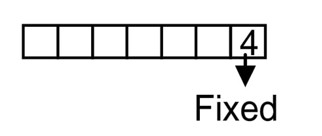30. A fair coin is tossed four times, and a person win Re 1 for each head and lose Rs 1.50 for each tail that turns up.
From the sample space calculate how many different amounts of money you can have after four tosses and the probability of having each of these amounts.
30. A fair coin is tossed four times, and a person win Re 1 for each head and lose Rs 1.50 for each tail that turns up.
From the sample space calculate how many different amounts of money you can have after four tosses and the probability of having each of these amounts.
-
1 Answer
-
30. When a coin is tossed four times we have the sample space,
S = {HHHH, HHHT, HHTH, HTHH, THHH, HHTT, THHT, TTHH, THTH, HTHT, HTTH, TTTH, TTHT, THTT, HTTT, TTTT}
So, n (S) = 16.
Case I: When the outcome is all head, the amount is 1 + 1 + 1 + 1 =? 4 gain
Case II: When the outcome is 3 head and one tail, the amount is
1 + 1 + 1 – 1.50 = 3 – 1.50 =? 1.50 gain
Case III: When the outcome is 2 head and 2 tail, the amount is
1 + 1 – 1.50 – 1.50 = 2 – 3 =? 1 lose.
Case IV: When the outcome is 1 head and 3 tail, the amount is
1 – 1.50 – 1.50 – 1.50 = 1 – 4.50 =? 3.50 lose.
Case V: When the outc
...more
Similar Questions for you
3, 4, 5, 5
In remaining six places you have to arrange
3, 4, 5,5
So no. of ways
Total no. of seven digits nos. =
Hence Req. prob.

f (x) = x? – 4x + 1 = 0
f' (x) = 4x³ – 4
= 4 (x–1) (x²+1+x)
=> Two solution
Let z be equal to (x + iy)
(x + iy) + (x – iy) = (x + iy)2 (i + 1)
Equating the real & in eg part.
(i) & (ii)
4xy = -2x Þ x = 0 or y =
(for x = 0, y = 0)
For y =
x2
x =
=
of
=
When
gives c = 1
So
sum of all solutions =
Hence k = 42
Each element of ordered pair (i, j) is either present in A or in B.
So, A + B = Sum of all elements of all ordered pairs {i, j} for and
= 20 (1 + 2 + 3 + … + 10) = 1100
Taking an Exam? Selecting a College?
Get authentic answers from experts, students and alumni that you won't find anywhere else
Sign Up on ShikshaOn Shiksha, get access to
- 65k Colleges
- 1.2k Exams
- 679k Reviews
- 1800k Answers
